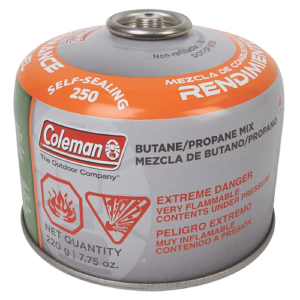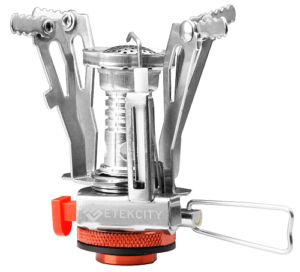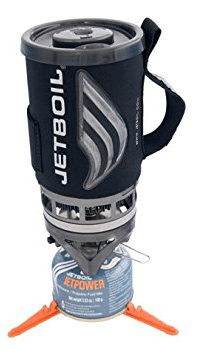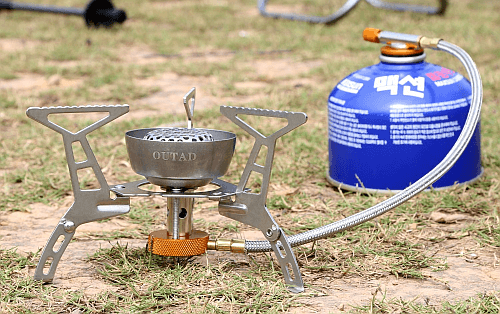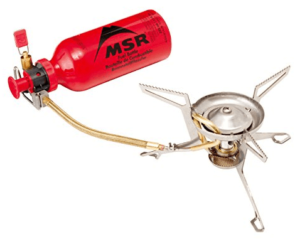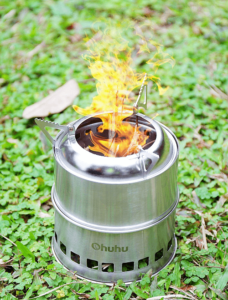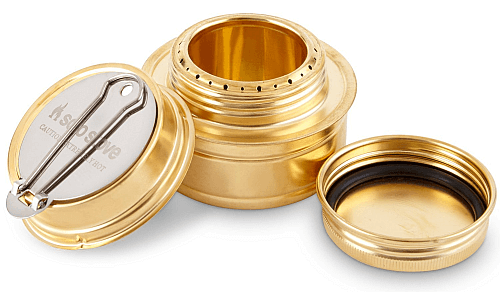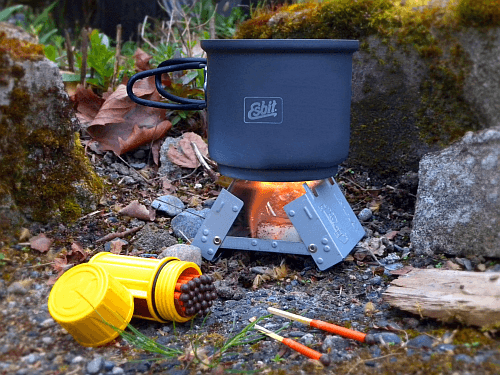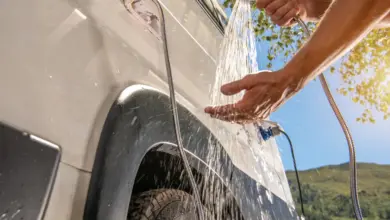The Complete Guide To Winter Camping Stoves
The Complete Guide To Winter Camping Stoves
Even if you will be cooking by a campfire, bringing a camping stove for winter trips is a good idea. During storms or ugly weather, you can stay nice and warm inside your tent and sleeping bag and use the stove outside your tent. Another reason to have a stove in cold weather is for emergencies such as making warm liquids to prevent hypothermia. Stoves also lessen the impact on the environment as there is no wood to burn. Winter camping stoves are similar to regular stoves but use fuel that is better served in cold weather.
For winter camping and hiking, you’ll want a stove that is tough, reliable, easy to use, puts out a lot of heat, and can be repaired easily in the field if needed. If you are mountaineering, weight may also be a factor.
Types of Camping Stoves
The best camping stoves for cold weather are white gas stoves. White gas is additive-free automobile gasoline and is highly volatile, so it’s a little more dangerous than other types of fuel. The advantage of white gas is that it burns very hot even in extremely cold weather. It is easily obtainable in North America, Australia, and New Zealand, and is relatively cheap.
White gas stoves do require a little bit more maintenance. They must be pumped occasionally to maintain the pressure inside the fuel tank, and they also require priming with preheated fuel. These tasks are considered to be worth the effort for the increased performance and heat you will get.
There are three main types of backpacking stoves:
- Canister stoves – These are easy to use and require little maintenance. They typically screw onto the top of fuel canisters that are a mix of isobutane and propane.
- Liquid fuel stoves – These stoves connect to refillable fuel bottles. These bottles typically run on white gas, but there are a few types of fuel to choose from. This is a nice way to go if you will be traveling internationally and want to use different types of fuel.
- Alternative-fuel stoves – These stoves are less popular and run on other fuel types such as pellets or wood.
See this video explaining the different types of backpacking stoves:
Canister Stoves
Canister stoves are small, lightweight, and easy to work with. They require no priming. Simply turn the valve and light the stove with a match, lighter, or built-in piezo ignitor. With most models, the flame is adjustable to fit your needs. Some canister stoves have a built-in pressure regulator that provides consistent heat output, regardless of how much fuel is left. However in cold weather, unless the stove has a pressure regulator, canisters can depressurize and produce a weaker flame.
>> Coleman Butane Propane Mix Fuel Canister
There are a few other downsides to canister stoves. It’s tough to exactly know how much fuel is left, but regardless, it’s always wise to carry a backup canister. Compared to liquid-fuel stoves, fuel for canisters is more expensive. Unfortunately, canister stoves are not reusable, so they are best to be recycled after they are empty and depressurized.
There are two types of canister stoves:
- Integrated canister systems
- Remote canister stoves
You may also like Ozark Trail 2 Burner Camp Stove Review
Integrated canister systems
These types of stoves have a burner that screws directly on top of the fuel canister. Some of these stoves are small, lightweight, and inexpensive. These smaller stoves have shorter arms, so it may be more difficult for them to hold larger pots.
>> Etekcity Ultralight Backpacking Stove with Piezo Ignition
Other stoves of this type connect to a twist-on cooking pot. These cooking pots are often insulated and come with a drain hole and/or pour hole. Sometimes the fuel canister can fit inside the cooking pot to make packing easier. Keep in mind these stove systems are tall, so they are best used on flat and sturdy surfaces.
>> Jetboil Flash Personal Cooking System
Most of these stoves are designed to boil water quickly, rather than cook and simmer food, although cooking food on these stoves is still possible. These stoves boil water quickly, thanks in part to a built-in windscreen. A windscreen should not be used with these stoves because it can trap heat and cause the fuel to explode.
Remote canister stoves
Remote canister stoves connect the fuel canister to the stove through a fuel hose, instead of attaching the canister directly to the stove. These stoves do have more parts with the hose, but it doesn’t take up too much room or space. One advantage to using a remote canister stove is that a windshield may be used, and sometimes the canister can be positioned upside down to increase cold weather performance. These stoves typically have longer support arms for holding larger pots.
>> OUTAD Windproof Foldable Camping Stove
You may also like WindTAMER Camp Stove Companion Review
Liquid-fuel Stoves
All liquid-fuel stoves are able to run on white gas inside refillable fuel bottles, so there is no canister to discard once it is empty. White gas is highly refined to have very few impurities. White gas burns hot, making it ideal for cold weather, and it costs much less than canister fuels.
Some multi-fuel stoves can run on multiple fuels such as jet fuel, kerosene, unleaded auto gasoline, and diesel. Multi-fuel stoves can come in handy when traveling internationally. It is not recommended however to use unleaded gasoline from the pump, as the additives may harm your stove.
>> MSR WhisperLite International Stove
The downside to liquid fuel stoves is that they require priming, which involves igniting a few drops of fuel in a cup below the burner. This small flame preheats the fuel line. This enables the stove to convert liquid fuel into a vapor. You will also need to pump the fuel bottle to increase the pressure.
These stoves require some additional tasks. The fuel hose should be cleaned and the o-rings inspected for any damage.
Alternative-fuel Stoves
These stoves don’t use gas as fuel but rather use other sources. These stoves often appeal to long-distance backpackers and those interested in home emergencies.
Here are a few types of alternative-fuel stoves:
- Wood-burning stoves
- Denatured Alcohol Stoves
- Solid-fuel Tablet Stoves
Wood-burning Stoves
>> Ohuhu Wood Burning Camping Stove
Wood-burning stoves burn twigs and leaves. This may be a good option for longer backpacking trips as there is no fuel to carry or to buy in town. These stoves can be really simple and lightweight. For example, some stoves can be taken apart in a few pieces to save space. There are some pretty neat wood-burning stove gadgets on the market that also can charge mobile phones using a USB connection. The downside to wood-burning stoves is that you must have dry wood, which may not always be available.
You may also like Can You Use a Mini Fridge for Camping?
Denatured Alcohol Stoves
>> Solo Alcohol Burner – Spirit Alcohol Stove
These stoves often appeal to ultralight or long distance backpackers because of how little they weigh. They are super simple with very few parts and don’t require any special maintenance. In fact, these stoves are so simple that you can create your own using a cat food can, often called a Super Cat stove. Some Appalachian Trail hikers carry these types of stoves.
Denatured alcohol is inexpensive and easy to find. It doesn’t burn as hot as other fuels, so it will take a few more minutes to bring water to a boil and use more fuel in the process.
Solid-fuel Tablet Stoves
>> Pocket Camping Stove
These stoves are similar to some of the wood-burning backpacking stoves, but they use fuel tablets instead of wood. These are also a popular choice for ultralight backpackers as they are also lightweight, inexpensive, and fold up to save space. The downside is that they don’t burn as hot, bringing water to a boil slower compared to other stoves.
Types of Fuel
Besides white gas, which is best in cold weather, there are other types of fuel on the market, which may offer some alternatives:
- Unleaded automobile gasoline – This is widely available and less expensive than white gas. Be sure to check if your stove can handle this type of fuel, as additives in the fuel may clog the stove.
- Kerosene – This fuel burns hot, is inexpensive, and is widely available. The downside is that it is hard to light, smokey, and has a strong smell. It also takes a long time to evaporate if spilled.
- Butane – This works quite poorly in the cold and the canisters are non-renewable and must be packed out.
- Propane – This fuel burns well at subzero temperatures. The fuel bottles weigh 2-3 pounds apiece, which could be a factor to consider.
- Blended fuels – These are mixtures of butane and propane that work better than straight butane in cold weather. These fuels also come in nonrenewable disposable containers.
You may also like Best Tents with Porch
Camp Stove Safety
There are a few “don’ts” when it comes to operating a camping stove. Mainly, it’s important to operate the stove outside your tent, and not inside. Carbon monoxide is a by-product of white gas combustion, which can eventually lead to death. Another reason not to cook inside your tent is to prevent damage to the tent in the event of a flare-up.
